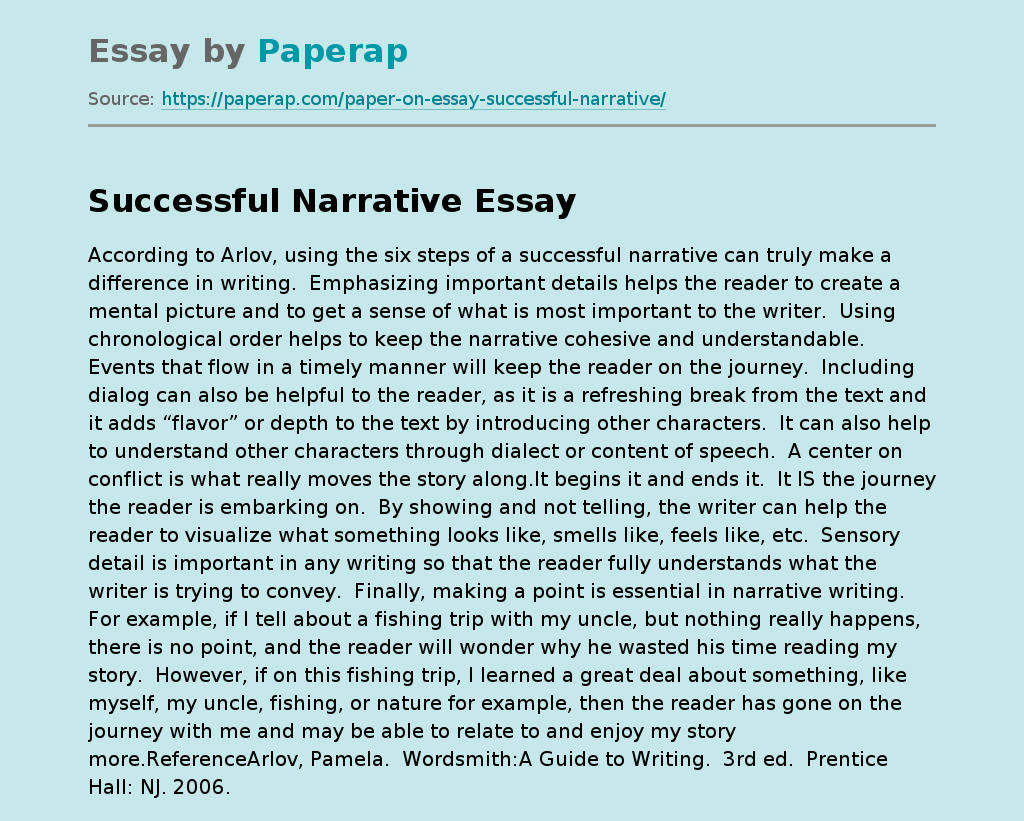Six Steps to Successful Storytelling
According to Arlov, using the six steps of a successful narrative can truly make a difference in writing. Emphasizing important details helps the reader to create a mental picture and to get a sense of what is most important to the writer.
Using chronological order helps to keep the narrative cohesive and understandable. Events that flow in a timely manner will keep the reader on the journey. Including dialog can also be helpful to the reader, as it is a refreshing break from the text and it adds “flavor” or depth to the text by introducing other characters.
It can also help to understand other characters through dialect or content of speech. A center on conflict is what really moves the story along.It begins it and ends it. It IS the journey the reader is embarking on.
By showing and not telling, the writer can help the reader to visualize what something looks like, smells like, feels like, etc. Sensory detail is important in any writing so that the reader fully understands what the writer is trying to convey.
Finally, making a point is essential in narrative writing. For example, if I tell about a fishing trip with my uncle, but nothing really happens, there is no point, and the reader will wonder why he wasted his time reading my story.
However, if on this fishing trip, I learned a great deal about something, like myself, my uncle, fishing, or nature for example, then the reader has gone on the journey with me and may be able to relate to and enjoy my story more.
Reference
- Arlov, Pamela. Wordsmith:A Guide to Writing. 3rd ed. Prentice Hall: NJ. 2006.
Six Steps to Successful Storytelling. (2019, Oct 09). Retrieved from https://paperap.com/paper-on-essay-successful-narrative/

